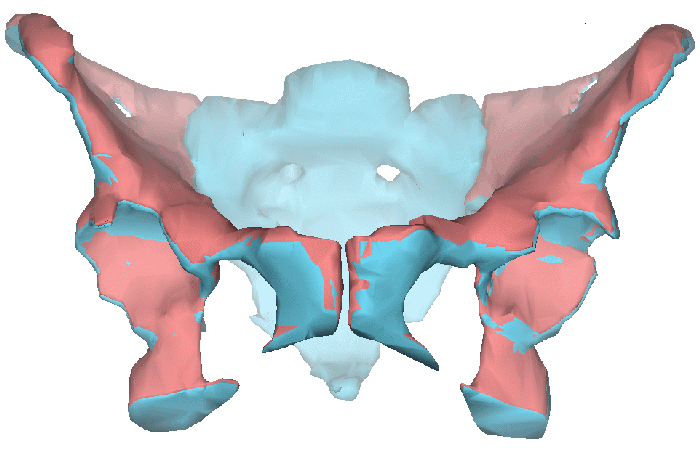
We have extracted crest line and extremal points on each segmented bone and register independently the sacrum, left and right hipbones in the two images. Since we are only interested in the relative motion of bones, we consider the motion of the sacrum as the global motion between the two images and we are interested in residual transformations for the hipbones.

Superimposition of the two pelvis configurations using the sacrum transformation: it seems that the hipbones of the "open pelvis" configuration (in blue) are slightly more opened than in the "closed pelvis" (in red).
The residual transformations of hipbones with respect to the sacrum are quite symmetric and are composed of a rotation of 0.7 deg around the vertical axis and a translation of about 2mm that tend to open the two bones. This seems to confirm the visual impression, but when we compute the uncertainties of these residual transformation, the conclusion is less obvious. Indeed, the Mahalanobis distances between the transformations are:

which corresponds to the decision
switch point for a ![]() at 99%. Thus, we cannot decide that there is a relative motion between
bones nor there that there is not.
at 99%. Thus, we cannot decide that there is a relative motion between
bones nor there that there is not.
In this experiement, we have only 30 to 35 features on each bone with a very large uncertainty (due to the important image anisotropy and the manual segmentation). We could perhaps obtain a better result in using a surface based registration, but we without knowing the uncertainties on the transformations, we cannot prove that there is really a motion.